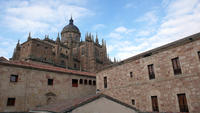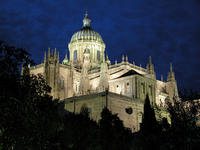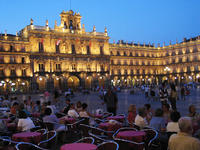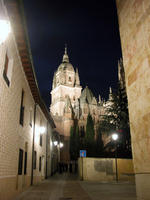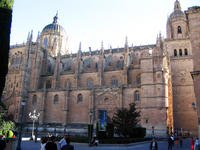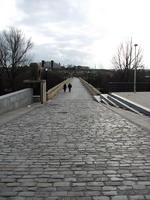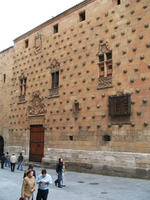You are in: Europe -> Spain -> Old City of Salamanca, and traditional search or Image Gallery will yield results of this site only
Old City of Salamanca
| Site number: | 381 |
|
| Type of site: | Cultural | |
| Date: | 3rd cent.BC | |
| Date of Inscription: | 1988 | |
| Location: | Europe, Spain, Province of Salamanca, Autonomous Community of Castile-Leon | |
Up to 75 images are shown here. Click on each for more details or on Image Gallery for more images.
Six official UN languages:
Arabic,
Chinese,
English,
French,
Russian,
Spanish
Other languages: Asturian, Bulgarian, Catalan, Dutch, Esperanto, Finnish, Galician, German, Hebrew, Indonesian, Italian, Japanese, Latin, Norwegian-bokmål, Polish, Portuguese, Serbian, Swedish
Other languages: Asturian, Bulgarian, Catalan, Dutch, Esperanto, Finnish, Galician, German, Hebrew, Indonesian, Italian, Japanese, Latin, Norwegian-bokmål, Polish, Portuguese, Serbian, Swedish
| Description: | Located north-west of Madrid, this early university town was at first occupied by the Carthaginians in the 3rd century B.C. It soon turned into a Roman settlement before being governed by the Moors until the 11th century. One of Europe’s oldest university, it reached its climax during the golden age of Salamanca. Significant Romanesque, Gothic, Moorish, Renaissance and Baroque monuments grace the city's historic centre. Particularly impressive is the gallery and arcade-lined Plaza Mayor. --WHMNet paraphrase from the description at WHC Site, where additional information is available. | |
| Salamanca (population 160,000) is a city in western Spain, the capital of the province of Salamanca, which belongs to the autonomous community (region) of Castile-Leon (Castilla y León). The city was founded in the pre-Ancient Rome period by the Vacceos, a Celtic tribe, as one of a pair of forts to defend their territory near the Duero river. In the third century BC, Hannibal laid siege to the city. With the fall of the Carthaginians to the Romans, the city began to take more importance as a commercial hub. At this time it was called Helmantica or Salmantica. One of the most important moments in Salamanca's history was the year 1218, when Alfonso IX created the University of Salamanca. Soon it became one of the most significant and prestigious academic centres in Europe. In the Peninsular War of the Napoleonic campaigns, the Battle of Salamanca, fought July 22, 1812, was a serious setback for the French, and a mighty setback for Salamanca, whose western quarter was seriously damaged. The battle which raged that day is famous as a defining moment in military history; many thousands of men were slaughtered by cannon fire in the space of only a few short hours. The city lies on a plateau by the Tormes River, which is crossed by a bridge 500 ft long built on 26 arches, fifteen of which are of Roman origin, while the remainder date from the 16th century. The Plaza Mayor is the central square in the city and is known as the living room of the Salmantinos (Salamancans). It was constructed by Andres Garcia de Quifiones at the beginning of the 18th century. The plaza has a capacity of 20,000 people and is surrounded by shaded arcades. The plaza was originally a venue for bullfights but is currently used primarily for concerts. The plaza is regarded as one of the finest squares in Europe. Next to Main Square we can see the Central Market of Salamanca with typical fresh products of Spain. Salamanca is considered one of the most spectacular Renaissance cities in Europe. Through the centuries the sandstone buildings have gained an exquisite golden glow that has given Salamanca the nickname La Ciudad Dorada, the golden city. This golden glow is unique in Spain and is due to the "Villamayor Stone", a type of sandstone coming from a quarry situated in Villamayor, a village close to Salamanca. --Wikipedia. Text is available under the Creative Commons Attribution-ShareAlike License. | ||
| Source: | http://whc.unesco.org/en/list/381 | |
| Source2: | http://www.google.com/intl/en/landing/unesco/ | |
| Reference: | 1. UNESCO World Heritage Center, Site Page. | |







